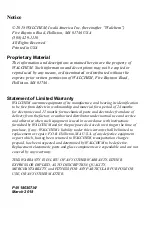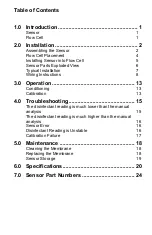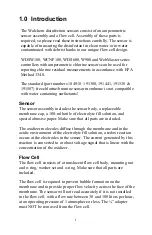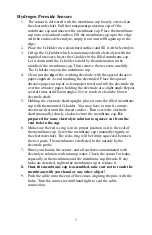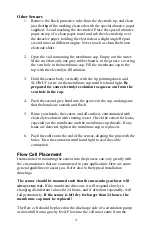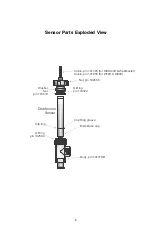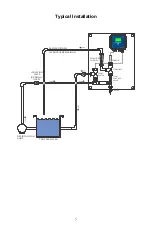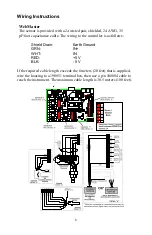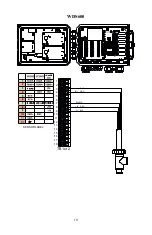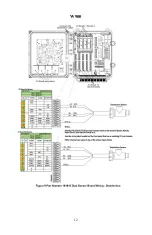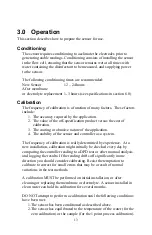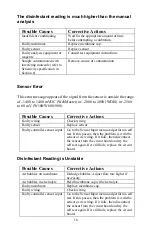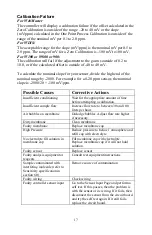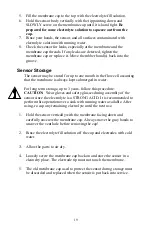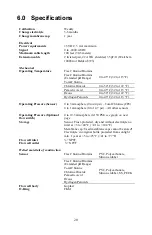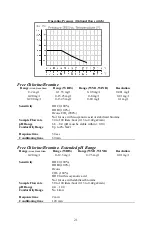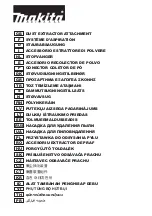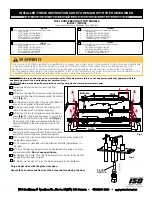
13
3.0 Operation
This section describes how to prepare the sensor for use.
Conditioning
The sensor requires conditioning to acclimate the electrodes prior to
generating stable readings. Conditioning consists of installing the sensor
in the flow cell, ensuring that the sensor remains wet at all times with
water containing the disinfectant to be measured, and supplying power
to the sensor.
The following conditioning times are recommended:
New Sensor
12 – 24 hours
After membrane
or electrolyte replacement 1-3 hours (see specifications in section 6.0)
Calibration
The frequency of calibration is a function of many factors. These factors
include:
1.
The accuracy required by the application.
2.
The value of the off-specification product versus the cost of
calibration.
3.
The coating or abrasive nature of the application.
4.
The stability of the sensor and controller as a system.
The frequency of calibration is really determined by experience. At a
new installation, calibration might initially be checked every day by
comparing the controller reading to a DPD test or other manual analysis
and logging the results. If the reading drifts off significantly in one
direction you should consider calibrating. Resist the temptation to
calibrate to correct for small errors that may be a result of normal
variations in the test methods.
A calibration MUST be performed on initial installation, or after
cleaning or replacing the membrane or electrolyte. A sensor installed in
clean water can hold its calibration for several months.
DO NOT attempt to perform a calibration until the following conditions
have been met:
1.
The sensor has been conditioned as described above.
2.
The sensor has equilibrated to the temperature of the water (for the
zero calibration) or the sample (for the 1 point process calibration).

